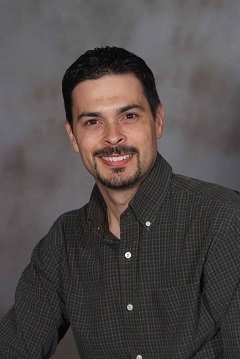
_By Daniel Dardiz, M.A,, CCC-SLP
Over the past twenty years, I’ve had the privilege of working with clients and families who come from many different cultural and linguistic backgrounds. Communication is a component that encompasses every aspect of our lives. Spoken and written language is all around us. Family gatherings, social engagements, school classrooms, social media, are just a few examples of how much we are dependent on spoken and written language to communicate with one another
For those individuals who come from homes with monolingual or bilingual speaking families, and are either in need of or use AAC to communicate, the advancements in device technology are especially important. The ability to communicate fluently in addition to accessing social media and internet among other platforms is very exciting as technology continues to grow and develop.
Although the focus of educators, families, and speech therapists has become more acute when it comes to bilingual AAC users, the quantity of research focused on these children is still lacking. To give an idea of the need, recent studies report almost 400 million people worldwide are native speakers of Spanish, concentrated in Spain, Mexico, and Central and South America. In the United States, there are 41 million individuals whose native language is Spanish and an additional 11.6 million individuals, mostly children of Spanish-speaking immigrants (heritage speakers), who are bilingual speakers of Spanish and English.
We do know in general proficiency in language is key for children to advance in academic and social understanding skills. However, what strategies/approaches can we look to address literacy skills, particularly for children who need/use AAC and come from monolingual or bilingual families?
There are differences in opinions (based on research findings) as to which language to approach first in therapy. Studies have focused on aspects such as concentrating on the native language first to build competencies that will eventually transition to the second language. Others point to scaffolding between the two simultaneously working on linguistic concepts in both languages. Children typically fall into two categories when it comes to learning two (or more) languages. Those that can acquire both languages simultaneously, while others will learn sequentially.
Below is a general list of suggestions from the American Speech and Hearing Association based on research and clinical observations that can help address these areas:
Use both languages, if possible, from the moment a child is born. Many studies in the area of language development have shown that children as young as 6 months of age are listening to sounds in the home language. Starting this early allows a child to have maximum exposure to sounds, words and sentences in both languages.
Use one language at home. This may sound initially slightly contradictory from the first suggestion. However, we must now consider once a child is older and begins to move into an environment where the second language (not the home language) will be spoken or listened to most often, such as school, maintaining the home language will be critical. Particularly for a child who will need or uses AAC. The opportunities to build on the concepts of both languages will be plenty. Having a strong/robust AAC system that provide the child access to both languages is now also very important to consider.
Research points to a strong foundation of expressive/receptive language skills can translate into strong written language skills. Exposure to both languages can assist with this transition.
Allow your child ample opportunities to practice both languages on their own in natural, social contexts. Often when I speak to families and clinicians who have/work with children in need of AAC and come from homes speaking their native languages, I use this example to help focus on the benefits of emersion. If I were to give you the choice of learning a foreign language for two times per week, each session lasts 60 minutes or an all expensed paid trip for 3 months to the country of your choice to learn the language, which would you choose?
I would imagine most would take the trip. Why? Immersing yourself in an environment where another language is spoken provides you with ample opportunities to practice, make mistakes, correct those mistakes in natural, social contexts. Same for a child who needs a AAC and has exposure to two languages.
In general, the more opportunities to practice in natural/social contexts, the more opportunists to grow in their language skills in both languages.
There are no comments yet. Be the first to post!You must be logged in to post.
Stories and Strategies fo...















